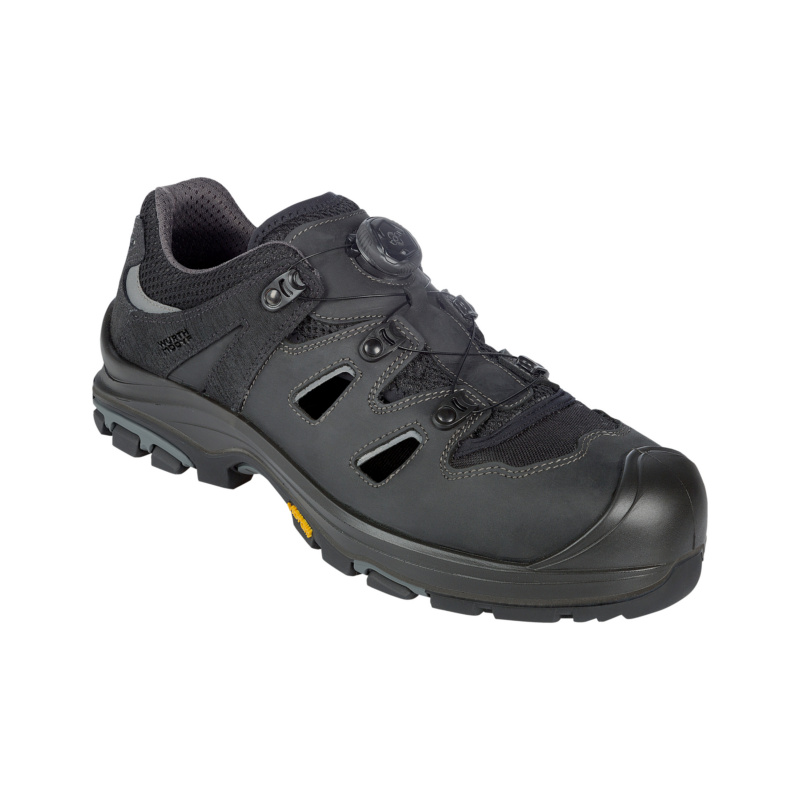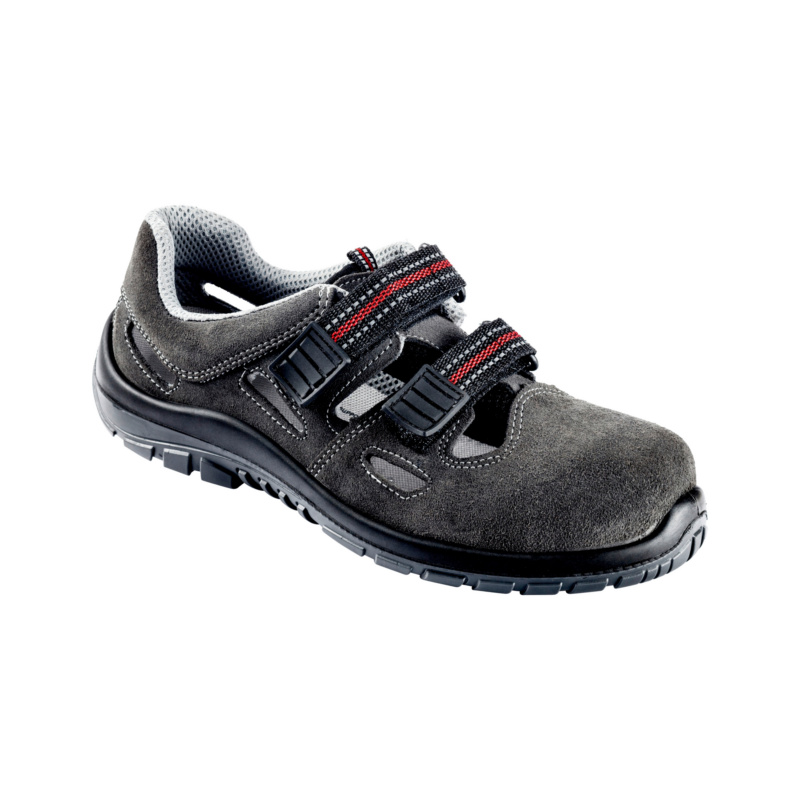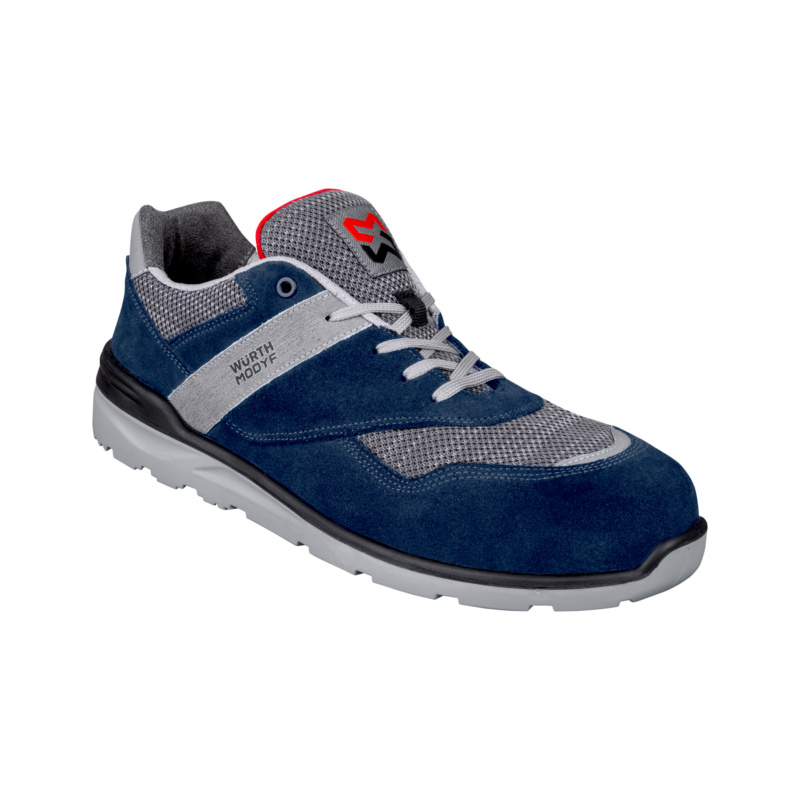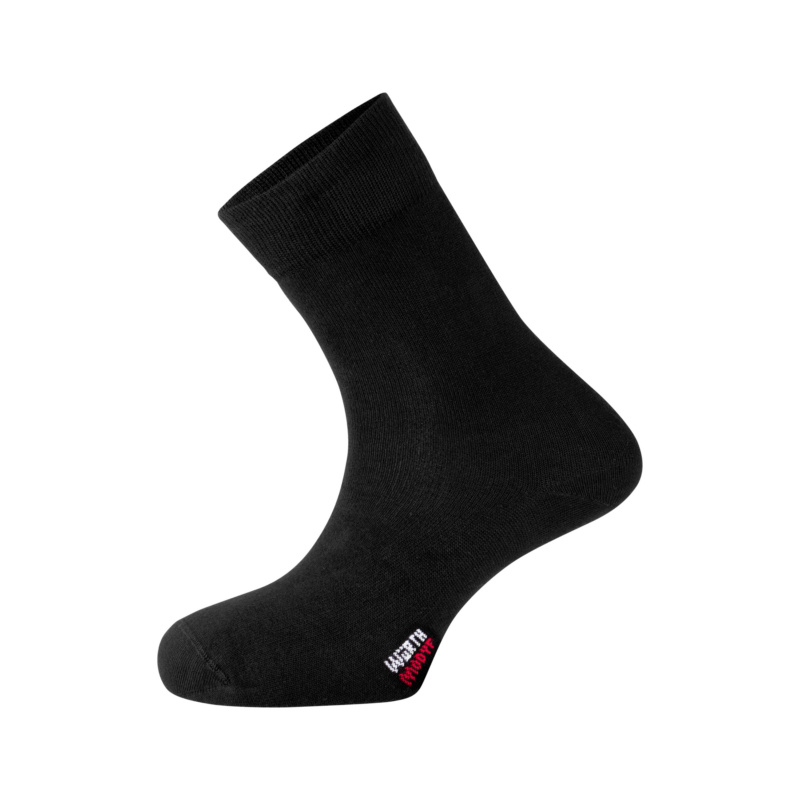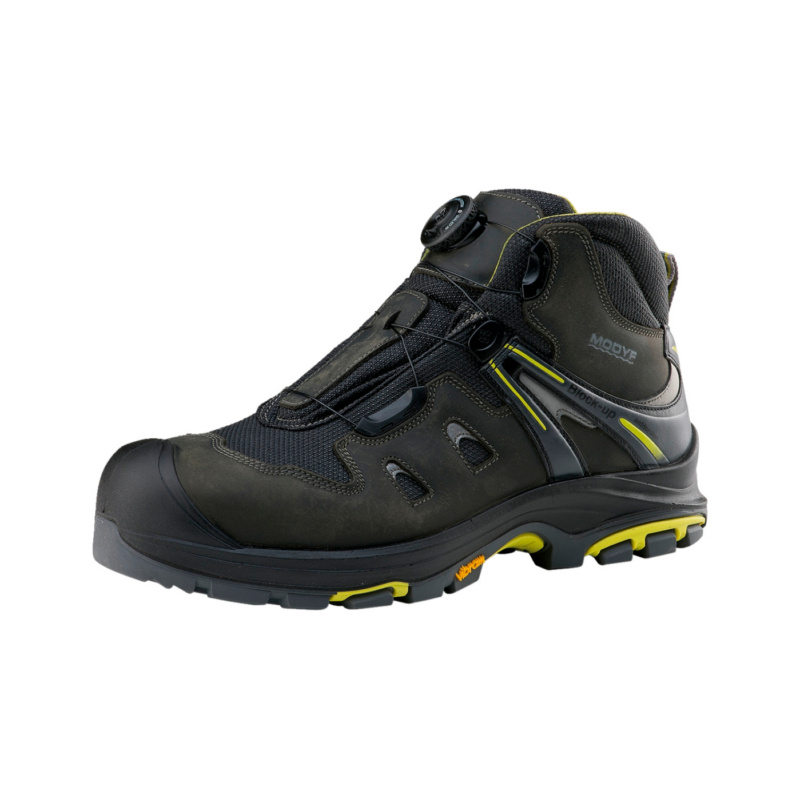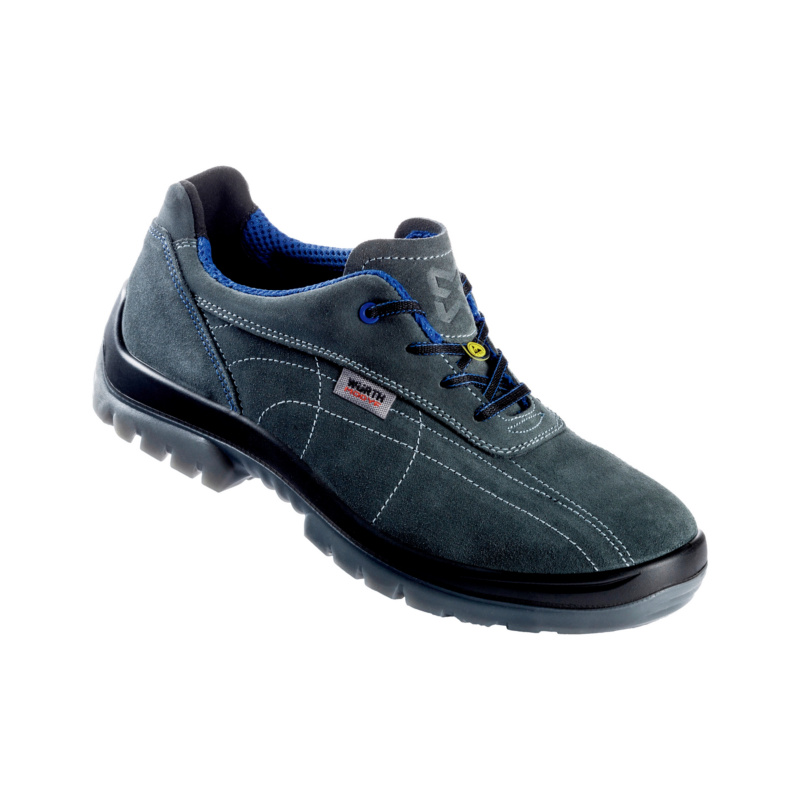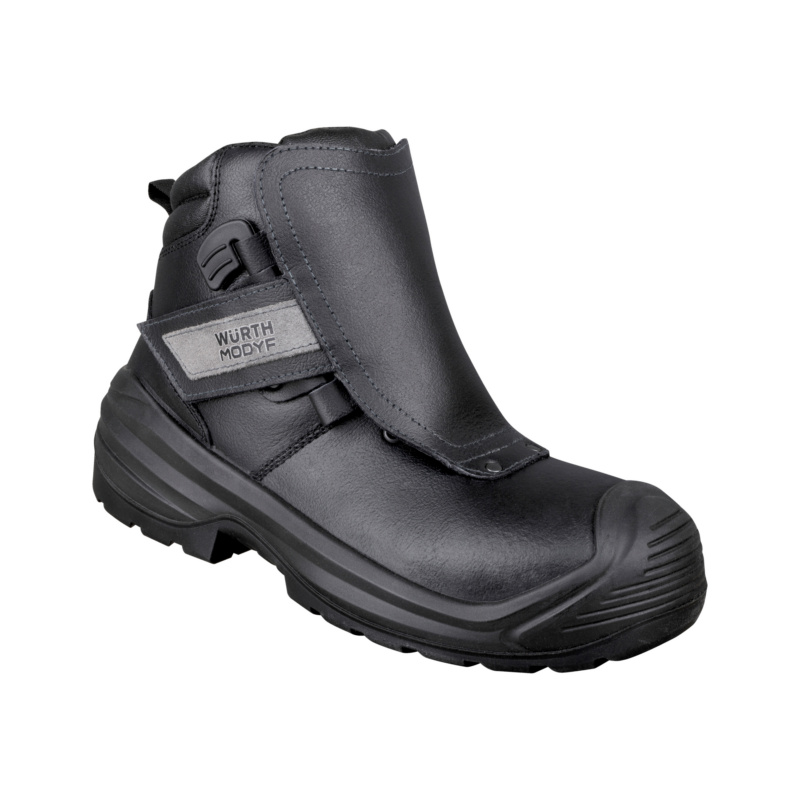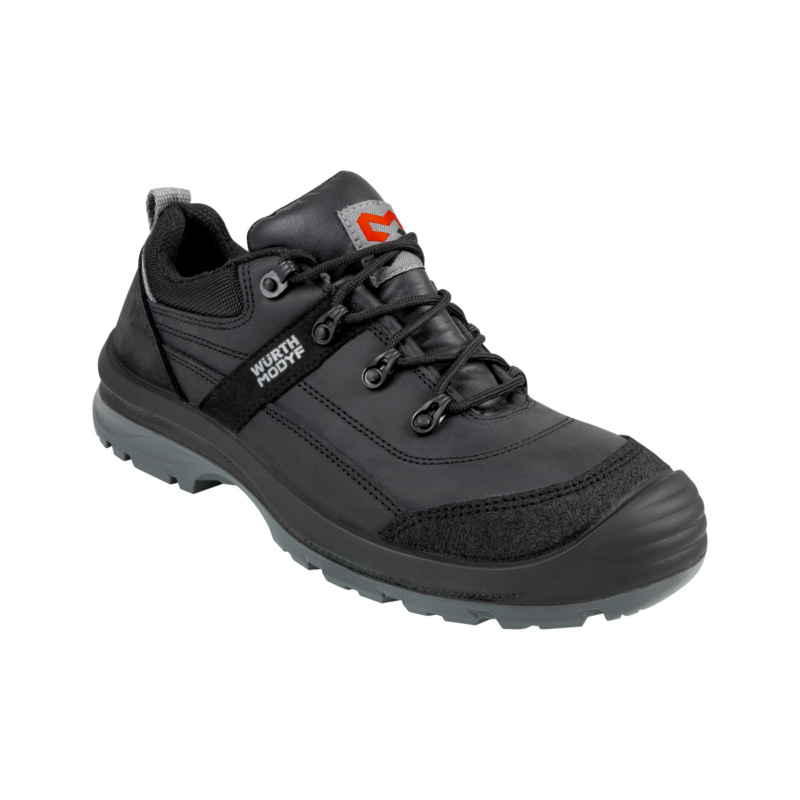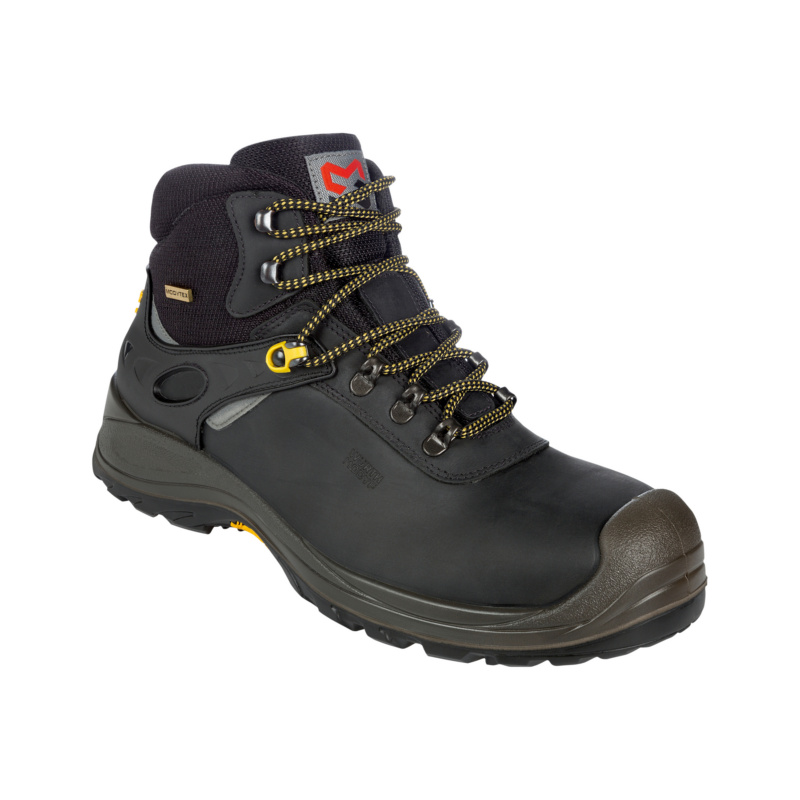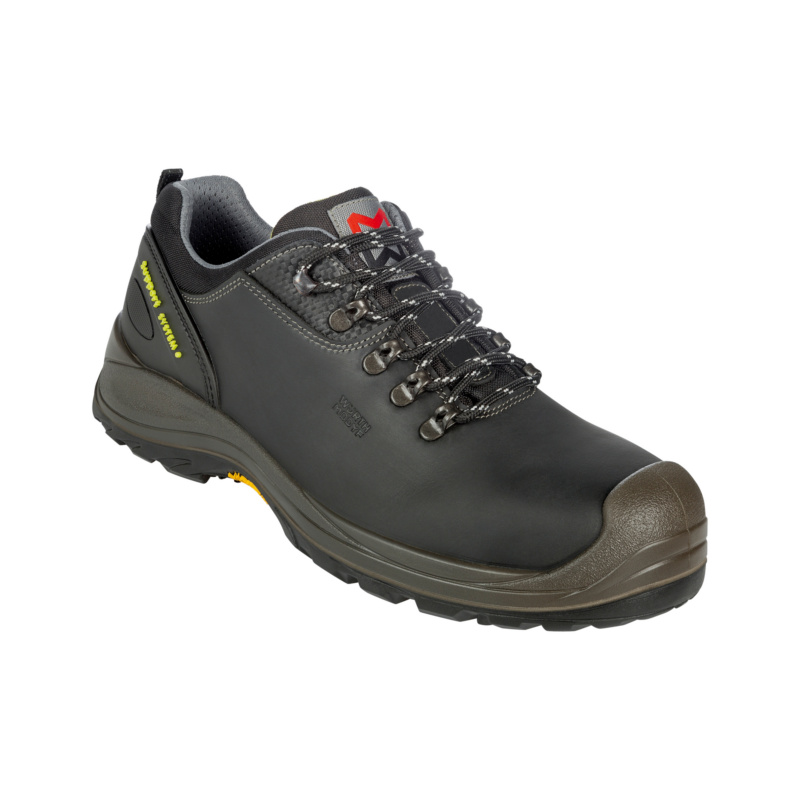
Safety shoes for everyday jobs
Safety shoes should be comfortable, abrasion-resistant and durable. They should also be appropriate for the respective working conditions. Do you work outdoors or indoors? What is the risk assessment of your professional duties? This determines the minimum protection class you need to wear at work. The basic specification in general workshops is S1P. In car workshops, for example, it is mandatory to wear S3 safety shoes. Here you will find more detailed information about the different protection classes.
Professional shoes according to DIN EN ISO 20347
The ideal choice of shoes for your job depends on the activities you perform and the associated risks. Those who do not need special protection at work are just as well served by professional shoes. Our comfortable professional shoes are certified according to the international standard DIN EN ISO 20347. Professional shoes are not designed for risks that can occur due to impact and pressure.
More comfort and protection with the right technologies

AIR-FINITY SOLE: Goodbye heavy feet
A patented sole technology that reduces up to 55% of shock loads and about 30% of pressure on the sole. This reduces foot pain and protects the joints. In addition, this sole offers particularly good thermal insulation.

FLEXITEC: Maximum flexibility with consistent comfort
An additional sole technology made of transverse stiffened spring steel. The flat support surface gives the foot a stable subsurface and ensures optimal energy transmission and control with maximum flexibility. This technology is used exclusively in selected safety shoes.

METAL-FREE: Lighter, more comfortable and more flexible
Metal-free, thermally non-conductive shoes are indispensable as foot protection for airport employees, for example. In areas where safety shoes with steel caps or steel soles interfere with sensitive metal detectors at safety gates, metal-free shoes allow you to pass by easily without triggering an alarm. In addition, they are lighter, more comfortable and more flexible than shoes with steel caps. Metal-free safety shoes are also produced without metal hooks or eyelets.
How to find the right shoe size and width
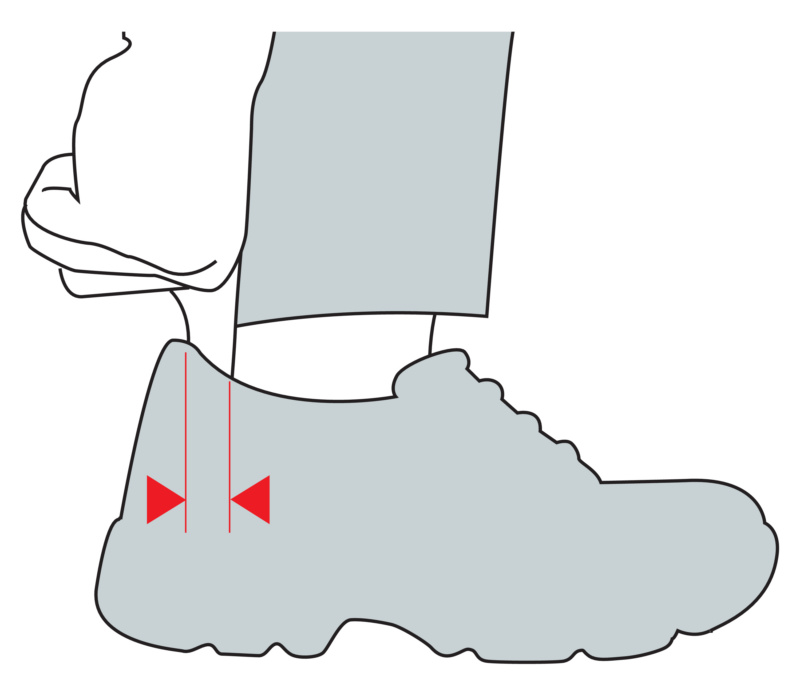
Determine the correct shoe size
When determining the correct shoe size, the following applies: "If the finger fits, the shoe fits…"
Choose your size. Stand in the unlaced shoe and position your index finger on the heel of the shoe (pictured). If you still have enough space in the shoe, lace it up and take a few "test steps".
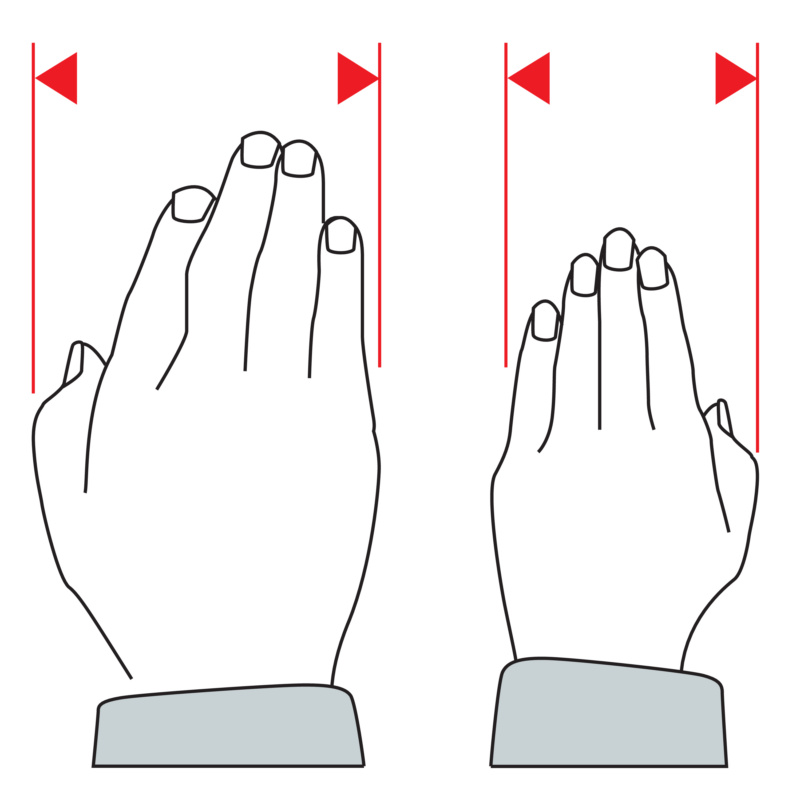
Determine the correct shoe width
"The width of the hand is the width of the shoe...”
The width of a shoe also makes a big difference to its comfort. The width of the back of the hand can (usually) be used to determine whether you have a broad or narrow foot. (See picture).
By the way: Your shoes should air out for at least 24 hours after any intensive period of wear. If possible, remove the insoles. Ideally, buy two pairs of shoes so that you can change them regularly.
FAQ - the most common questions on professional and work shoes
How do I care for my shoes properly?
Everyday dirt can be removed easily with a brush or a damp cloth. In the case of leather shoes, regular care with leather balm is recommended from first acquiring. It is best to rub the balm in with a cotton cloth and then leave the shoes to sit for 12 to 24 hours. This makes the leather supple and durable. Raw leather shoes such as suede or buckskin should be brushed regularly with a soft textile brush.
Can I wash my work shoes in the washing machine?
On long working days, it is normal for feet to release moisture and sweat. However, safety shoes are not suitable for washing in the washing machine.
Can I use any insoles I like in combination with my work shoes?
No, because only reference sample inserts may be used in work shoes. Once a reference sample has been carried out, the shoe must not be further modified, as otherwise the employers' liability insurance cover will not be valid. A different insole may alter the distance between the toes and the protective cap. If this distance is too small, this can lead to crushing in the event of an accident. In this instance, use our insoles .
I work a lot in a kneeling position, are there special shoes for this?
We have developed shoes especially for tradespeople who work a lot on their knees, our Stretch X work shoes . This shoe is equipped with special stretch inserts that make it very flexible. The low-cut shoe is available as Stretch X S1P in blue or as Stretch X S3 in grey, as well as Stretch X S3 boot in grey and Stretch X S1P slip-on in grey. If you work in a wet environment, you should go for one of the S3 shoes.
My shoe has an ESD symbol. What does it mean?
In general, you should know that ESD shoes protect items and not the wearer. ESD stands for electrostatic discharge, which is the electrical charge between two elements equalising in order to restore electrical balance. If you walk over a carpet in an office and then touch a metal latch, it is not uncommon to get a small electric "shock”. ESD shoes are designed to prevent damage occurring from discharge, such as electronic components being destroyed, or fires/explosions occurring in areas at risk of such, such as fuel installations. Warning: ESD shoes are not suitable for working on electrical sources.
The Adolf Würth GmbH & Co. KG collects and processes the personal data provided in the form in order to process the requested request for you. Please note the mandatory fields in the forms. The legal basis for this processing, the absolutely necessary data, is Art. 6 para. 1 lit. b GDPR, implementation of a pre-contractual measure. The processing of data voluntarily provided by you is carried out on the basis of Art. 6 para. 1 lit. f GDPR. Thereafter, processing is permissible which is necessary to safeguard our legitimate interests. Our legitimate interest is to have contact with you, our customers, to improve our consulting quality and to be able to contact you more easily in case of possible queries. The data collected will only be stored by us for as long as is necessary to process your enquiry and to contact you. They are then deleted.
Supplementary data protection information, in particular regarding your rights to information, correction, deletion, restriction of processing, objection and complaint, can be found in our data protection declaration.
After activating this functionality, your login data (customer number and partner number) is saved as a cookie on your device. We only recommend using this function if no other users have access to this device. More information about Cookies can be found in our data privacy statement.
-
-
-
To log in with a personal login name, please enter the login name you have chosen. If you have not yet assigned a login name, please use the login with customer number and assign a login name after successful login in the settings of 'My account'.
-
After activating this functionality, your login data (customer number and partner number) is saved as a cookie on your device. We only recommend using this function if no other users have access to this device. More information about Cookies can be found in our data privacy statement.
-
-
-
To log in with a personal login name, please enter the login name you have chosen. If you have not yet assigned a login name, please use the login with customer number and assign a login name after successful login in the settings of 'My account'.
-


